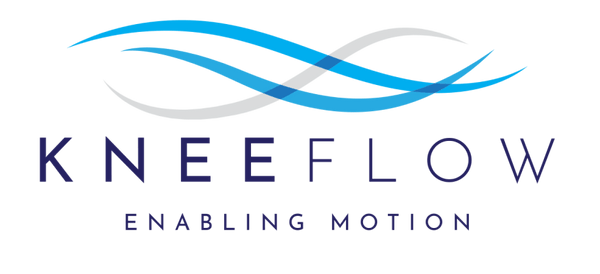Millions of people around the world suffer from chronic pain, a condition that can make everyday activities difficult or impossible. For many, traditional treatments like prescription drugs or surgery provide only limited relief.
Now there may be a new treatment option for those struggling with chronic pain: Red light therapy. This noninvasive approach uses low-level laser light to reduce inflammation and ease the pain.
There is growing scientific evidence that Low-level laser therapy can be an effective treatment for chronic pain. But before diving into it, let’s ask you a simple question:
Are you worried about your joint pain?
If yes, then you should consider trying this therapy. This treatment is becoming popular as it helps people with joint pain by reducing inflammation and improving joint function.
We know how frustrating joint pain can be, it can simply affect your style. People who go through this type of pain often find it hard to do their daily activities. Climbing the stairs, carrying groceries or even going for a walk can seem like an impossible task.
Chronic inflammation is one of the major causes of joint pain. Inflammation happens when our body’s white blood cells and chemicals go into overdrive to protect us from infection or injury. This process can cause redness, heat, pain and swelling.
Low-level laser therapy is a treatment that uses red low-level laser therapy (LLLT) to treat different medical conditions like inflammation, muscle pain and skin issues. It’s also known as biostimulation or photobiomodulation.
Key Scientific Phenomenon Behind The Treatment
Red light therapy is based on the principle of photobiomodulation. This means that red and near-infrared light can interact with the body at a cellular level to promote healing.
When these wavelengths of light are absorbed by the mitochondria, it triggers a series of events that leads to the production of ATP (adenosine triphosphate). ATP is the energy currency of the cell, and this increase in production can help to reduce inflammation.
Hence, Low-level laser therapy is very effective in treating a variety of conditions that cause chronic pain, including arthritis, tendonitis, and fibromyalgia.
Life is more than just saying "No" to chronic pain. This therapy can help you find relief and start living your life again.
What are the many forms of light therapy devices for pain relief?
There are almost as many options for light therapy devices as there are types of pain. That’s because the science behind each one is slightly different, and what works for one person might not work for another. But in general, there are a few different ways that light therapy can be used to relieve pain:
Red light therapy:
This type of therapy uses red and near-infrared light to penetrate deep into the tissue, where it can reduce inflammation and promote healing.

Low-level laser therapy (LLLT):
This therapy uses a low-power laser or LED to penetrate the skin and improve blood flow, which can help reduce pain.
Infrared light therapy:
This therapy uses infrared light to penetrate deep into the tissue and reduce inflammation.
UV light therapy:
This therapy uses ultraviolet light to kill bacteria and viruses, which can help reduce pain and improve healing time.
How Does It Help with Pain and Inflammation?
So, now that we've identified the many forms of Low-level laser therapy and their respective advantages, let's look at how they may help to reduce pain and inflammation in more detail.
Heals damaged tissues:
Well, first let's look at how Low-level laser therapy can help to heal damaged tissue. As we know, when tissues are damaged, they need more energy in order to repair themselves. This is where this therapy comes in – by providing this additional energy, it can help the body to heal itself more quickly.
Reduces inflammation:
In addition to helping heal damaged tissue, Low-level laser therapy can also help to reduce inflammation. This is because, as we mentioned earlier, it can help to increase the production of ATP. And, as we know, ATP is responsible for reducing inflammation.
Improves circulation:
Another way in which Low-level laser therapy can help to reduce pain and inflammation is by improving circulation. As we know, when circulation is poor, tissues don't get the oxygen and nutrients they need, which can lead to pain and inflammation. By improving circulation, Low-level laser therapy can help to ensure that tissues get the oxygen and nutrients they need, which can help to reduce pain and inflammation.
Cartilage Regrowth
One of the most common joint pain issues is a degenerative joint disease, also called osteoarthritis. It happens when the cartilage that protects your joints starts to break down. This can be very painful, and it often leads to inflammation. While there’s no cure for osteoarthritis, however, this therapy can help by stimulating the regrowth of cartilage.
So, there you have it – the science behind how Low-level laser therapy can help to reduce pain and inflammation. If you're suffering from pain or inflammation, then this therapy may be worth considering. At Kneeflow our advanced knee massagers have Infrared Red light therapy, which is a form of treatment that uses low-level laser or light-emitting diode (LED) technology to help improve health and wellness. It has many benefits, such as improved sleep, better athletic recovery, reduced inflammation, and more. So if you're looking for a way to improve your overall health and wellness, give low-level laser therapy a try!
Use Kneeflow for pain relief!
Our knee massager at Kneeflow can provide pain relief and preventive care for your knees in just 10-15 minutes! You'll be able to enjoy a relaxing experience without worrying about taking time off from work or school. The soft massage bags are made with airbags that deliver soothing pressure on the skin, while infrared heat helps warm up tight muscles after use so you feel relaxed all day long.
Red Light Therapy? More Like Red Light Bingo!





